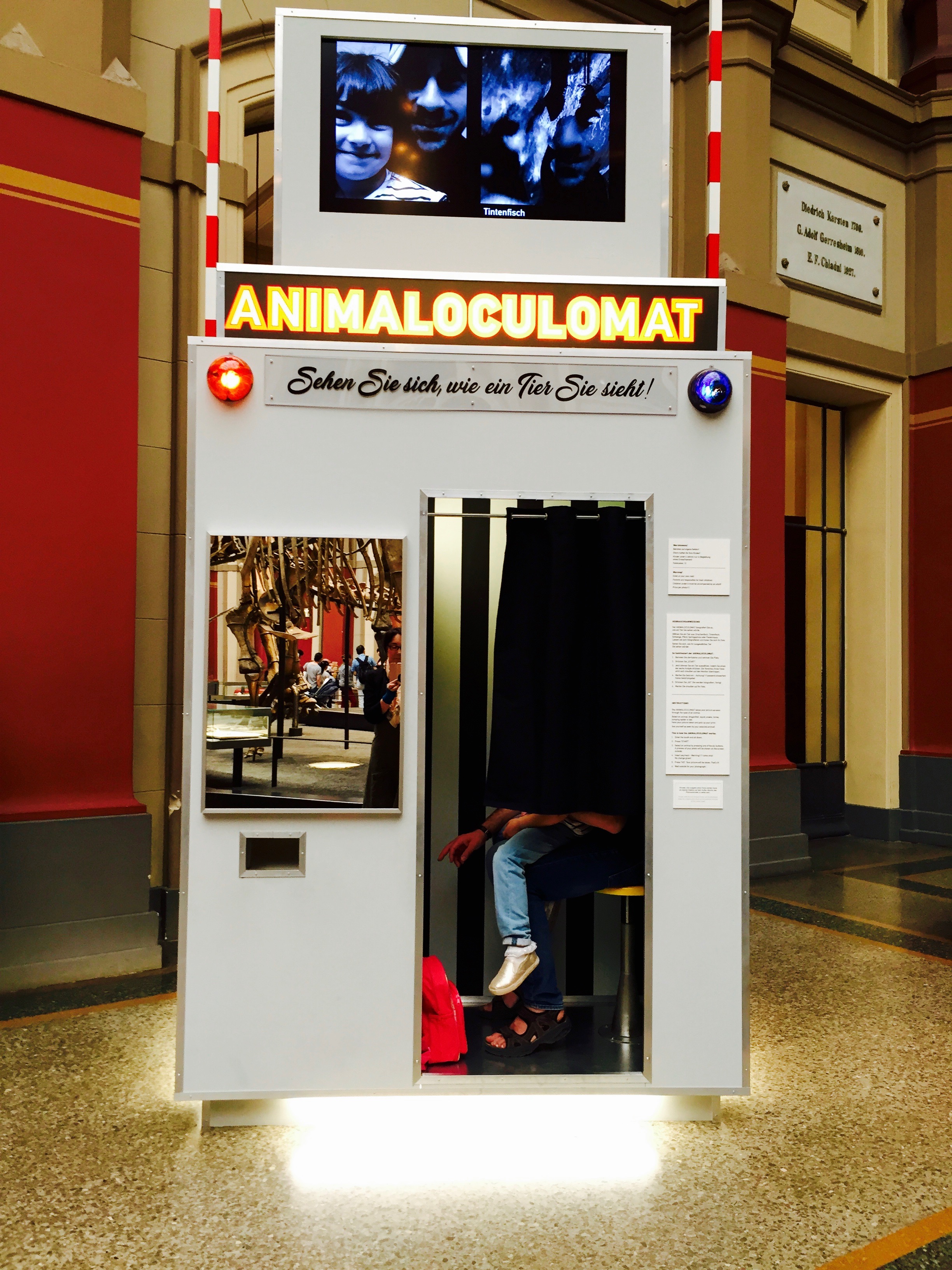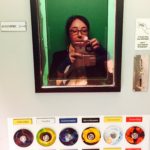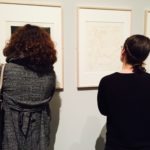by Jean Marie Carey | 14 Aug 2018 | Animals in Art, Art History, Contemporary Art, Dogs!, Expressionismus, Franz Marc, German Expressionism / Modernism, LÖL, Michelangelost©, Re-Enactments© and MashUps
Introducing Michelangelost™
Michelangelost™ is the newest name for the blog I have been writing since 2006, which began as mostly about dogs and animals. It has since had several titles, including Errata and German Modernism, and expanded to include numerous topics. Even though this website is becoming more of an official enterprise, I have kept my experimental and sometimes idiotic posts in the archive. The name Michelangelost™ came to me in Berlin, where Michelangelostraße is one of the stops on the Tiergarten Buslinie 200. Because the name of the stop is so long it was (funnily to me) abbreviated as “Michelangelost” on the scrolling Haltestelle legend. A remarkable photo was taken to document this occasion. I love obscurantist plays on words plus it seems descriptive of where we are in the art world right now. I had intended the Michelangelost™ project to be devoted to art criticism in the broadest sense, extended beyond galleries and museums to organisations, scenes, and academic affiliates, but I like the word and this photo in a more general way. So you will have to stay tuned for that secondary project, which now tentatively has the name “Intersectional Criminal Tribunal.” Meanwhile I am experimenting with this new design and how to retroactively typeset the older posts. – Until soon.

by Jean Marie Carey | 22 Sep 2017 | Animals, Animals in Art, Art History, Dogs!, Franz Marc, German Expressionism / Modernism
My article related to Franz Marc and his dog, “To Never Know You: Archival Photos of Russi and Franz Marc” has been published in the Fall 2017 issue of Antennae: The Journal of Nature in Visual Culture.
Here is the abstract for the story about Franz Marc and his dog, which also contains some valuable personal insights on vernacular photography from other scholars and benefited from the questions and comments from my Doktormutter Cecilia Novero:
-
This essay examines photographs of the German Expressionist artist, writer, and Tierliebhaber Franz Marc and his dog, Russi, taking the position that one of the most obvious characteristics of Marc’s life his – affectionate and respectful relationship with Russi – has been largely overlooked, though its documentation is clear. I extol the value of what are normally categorised as snapshots in reconstructing animal and human biographies. This raises questions about what photographs are valuable to such research, and why some are used repeatedly and others ignored. Significantly, a previously unknown photograph of Marc taken by his brother Paul in is published for the first time.
Mainly I had wanted to write about discovering this photo of Franz Marc in the DKM/GNM, so here it is again:

Franz Marc, 1914, in Munich. Photo by Paul Marc. Germanisches Nationalmuseum | Des Deutschen Kunstarchivs | Nürnberg

by Jean Marie Carey | 7 Jun 2017 | Animals, Animals in Art, Art History, Dogs!, Franz Marc, German Expressionism / Modernism, LÖL, Re-Enactments© and MashUps

Klara Hobza, Animaloculomat, 2017
Already by 1909 Jakob Johann von Uexküll had, in Umwelt und Innenwelt der Tiere, given a great deal of consideration to the „Innenleben“ of animals. For Franz Marc this led to the question of how a horse, an eagle, a deer, or a dog saw and experienced the world, prompting the reflection „die Tiere in eine Landschaft zu setzen, die unsren Augen zugehört, statt uns in die Seele des Tieres zu versenken, um dessen Bildkreis zu erraten“.[1]
A painting like Liegender Hund im Schnee, a depiction of Marc’s dog Russi, radiates the oneness between the surrounding nature and the resting dog – „eine gemeinsame Stille von belebter und unbelebter Natur.“[2] .“ But Marc was interested in the actual physical reality of the dog’s vision as well.

Inside Klara Hobza’s Animaloculomat

by Jean Marie Carey | 7 Apr 2017 | Art History, Dogs!, Franz Marc, German Expressionism / Modernism, Re-Enactments© and MashUps
Ars Graphica is a group of mostly European scholars who study prints but also photography. The pan-European organization also has a few Gesamtstaaten. Ars Graphica Deutschland recently branched off and began its own activities. The first one was this week, a tour of the In die Dritte Dimension: Raumkonzepte auf Papier vom Bauhaus bis our Gegenwart exhibition at the Städel Museum in Frankfurt given by the curator, Jenny Glaser. You can read more about what transpired here.
Dr. Glaser has organized a really superb show. The low and direct lighting is a bit off-putting at first, but many of the works are cut-outs, collages, incisions, or have subtleties of depth that the creation of shadows augments. The El Lissitzky poster prints from the Bauhaus are the stars of the show and Glaser’s clear favorite, but the less-known miniatures (matchbox sized) by Blinky Palermo placed across from Sol LeWitt’s late (2001) colorful confetti collage are probably more interesting, as is Michael Riedel’s artist book of minute but deep surgical removals.
There was also a look at the Städel’s more traditional Renaissance and Early Modern prints, and we got to visit and share a bit about our research…of course I have a vested interest in something at the Städel that is not a print…
I thought it might be best to just tell the exciting but short story about Liegender Hund im Schnee‘s journey from the Franz Marc estate to entartete to West Palm Beach and back to the Städel. Somehow the actual Germans were able to refrain from exclaiming that “all Germans are Nazis so who really cares if the museum was looted?”*
*Actual crowd responses at two of my last talks. More on this, as I keep promising, shortly; I actually have quite a lot to say about this in reference to the College Art Association in particular and looting apologists in general.

by Jean Marie Carey | 16 Mar 2016 | Animals in Art, Art History, August Macke, Dogs!, Expressionismus, Franz Marc, German Expressionism / Modernism
 Indexical photo with authorial shadow; graves of Franz and Maria Marc
Indexical photo with authorial shadow; graves of Franz and Maria Marc
On 4 March 2016, the 100th anniversary of the death of the painter, animal lover, writer, and ever-elusive person Franz Marc, I visited Marc’s grave in Kochel. Initially I had intended to spend the day between the Lenbachhaus and the Pinakothek der Moderne in München immersed in the paintings I have studied now for many years. But in truth I am devoted to Marc’s life as much as his art, and it seemed more right to take make a pilgrimage and pay respects in the proper sense of the word in the tiny Bavarian town where Marc lived off and on.
This trip was covered on the now-silent Franz Marc Twitter account and received much support and nice wishes from many kind souls.
It was a very emotional experience and had some typical Bavarian humorous adventures as well. I arrived on the regional train at about 11:00 on a dazzling clear, cold day, with most of the snow from the previous week’s blizzard still on the ground. The Ammergau Alps, what Marc called „das blaues Land“, glowed. Inserting itself into this majestic, somber first act was the fact that, in Kochel, Ruhezeit on Fridays apparently begins at 11:00…and this was a very intense Ruhezeit too…everything had abruptly closed, including the flower shop where I had intended to get some violets. I should add that all the flowers and plants were just sitting there outside, and the doors to the shop were open, but the lights were off and the people away being quiet. This was the same at other shops – I have always found it very amusing that in places where Ruhezeit is taken seriously, lunch places also close, even though Ruhezeit is at lunch time, and Kochel takes Ruhezeit quite seriously. In fact it was Friday Ruhezeit the entire time I was there. I stayed until 16:00, the hour of Marc’s death.
(more…)

by Jean Marie Carey | 18 Feb 2016 | Animals, Animals in Art, Dogs!, Franz Marc, German Expressionism / Modernism, LÖL
 During February and March I am a Wissenschaftliche Gäste of sorts at the Universität Kassel’s Tier-Mensch Gesellschaft. I’m doing some research in the dOCUMENTA Archiv, finishing up a chapter in my dissertation, and giving a talk at this first-of-its-kind conference, “Animal Biographies: Recovering Animal Selfhood through Interdisciplinary Narration?”.
During February and March I am a Wissenschaftliche Gäste of sorts at the Universität Kassel’s Tier-Mensch Gesellschaft. I’m doing some research in the dOCUMENTA Archiv, finishing up a chapter in my dissertation, and giving a talk at this first-of-its-kind conference, “Animal Biographies: Recovering Animal Selfhood through Interdisciplinary Narration?”.
The program is incredible and the speakers amazing, each talk as fascinating as the next. There are also several installations and exhibits by Mathias Antlfinger and Ute Hörner and the interspecies collective from CMUK Köln. The program is free and you can register through 25 February through the link above.
I don’t know if I can quite live up to the talents of the other panelists, but I am confident of the attraction, pathos, and intrigue of my animal biographic subject, Russi Marc, whose death exactly 100 years ago this week was noted by his lifelong human companion, Franz Marc, who made many drawings and paintings of Russi through their lives together. Franz Marc himself died just a few weeks later. Studying Russi has taken on a life of its own in my research, and as this was a very well-documented dog and one who had many humorous and thrilling adventures I am very excited to be able to share his story with other animal lovers.
One thing I like so much about animal studies (in discussing the title of our nascent discipline, which is now beginning something like its second wave most of us are happy to jettison the “human-” prefix) is that its adherents are for the most part partisan activists. This challenge to the academy as we fight the losing battle of the Anthropocene and the Sixth Mass Extinction has not gone unnoticed; this week, a sort of prank article was exposed (and one could extrapolate perhaps planted by the same people or person), in the December 2015 issue of the academic journal Totalitarismus und Demokratie. In retrospect, perhaps a “discovery” about the inherited aggression of “German” German Shepherds was too good to be true…but I am very curious to see what the fallout will be, since the “research” depended upon “primary sources” about dogs…another reason to be glad for Russi’s well-established canine celebritude, I guess.



















 RSS - Posts
RSS - Posts